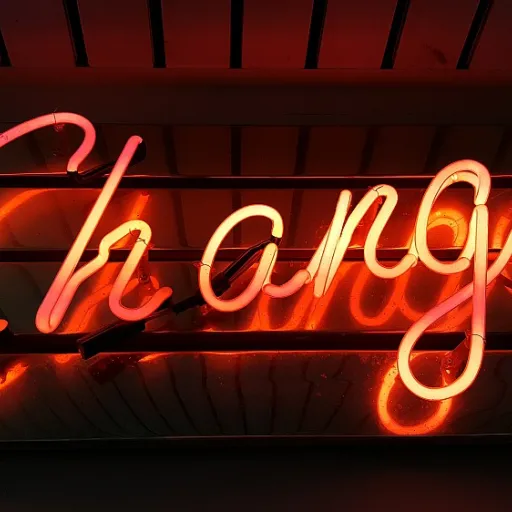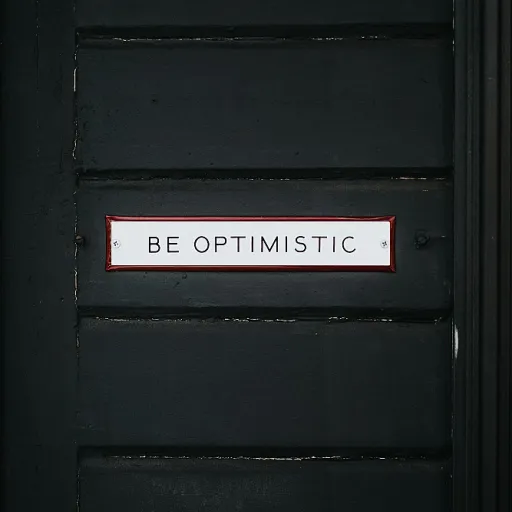
Understanding Skills Gap Analysis
Decoding Skills Gap Analysis
For businesses intent on retaining talent and aligning business goals with employee competencies, understanding the concept of skills gap analysis is vital. This analytical process involves comparing the current skills of employees against the skills required to achieve company objectives. By effectively identifying these gaps, companies can tailor training and learning development opportunities that foster growth and boost morale.
Conducting a comprehensive skills gap analysis not only helps pinpoint areas of improvement but also guides management in formulating strategies to bridge these divides. This process starts with a deep dive into existing data to evaluate the competencies already present in your team versus those needed for future tasks and roles.
Incorporating such techniques can save time, resources, and effectively guide your workforce towards your business objectives. Additionally, using an analysis template provides a free, structured approach to assessing and categorizing where skill enhancements are necessary.
Moreover, it's crucial to periodically review and update the skills matrix to reflect the evolving landscape of company needs and employee development. This proactive approach to skills management not only identifies general and soft skills deficiencies but also aligns employee goals with organizational aspirations.
While the initial effort may seem daunting, leveraging a well-designed template will streamline the process. As we explore the subsequent sections, you'll discover how to utilize this analysis effectively to boost employee engagement and retention. For more insights into the legal frameworks supporting retention efforts, consider exploring the impact of compliance on workforce stability.
The Role of Skills Gap Analysis in Employee Retention
The Significance of Identifying Skills Gaps in Retention
In the context of employee retention, identifying skills gaps plays a pivotal role in understanding the disconnect between current employee competencies and the skills needed to achieve business goals. Conducting a skill gap analysis provides valuable data to help organizations pinpoint areas where employees may require additional support or training.
This process not only assists in improving individual performance but also aligns with broader employee development and management objectives. By addressing these gaps, companies are in a stronger position to promote learning development and enhance overall work effectiveness.
A skills gap analysis acts as both a diagnostic tool and a strategic instrument. It helps to identify areas within the workforce that require attention, such as soft skills enhancement or technical skills knowledge updates. Implementing this analysis encourages a proactive approach to employee engagement and training, ultimately reducing turnover by addressing the specific needs of the workforce.
Moreover, the role of the skills gap analysis extends beyond immediate training; it provides a framework for developing a forward-thinking employee retention strategy. By leveraging data gathered from the skills matrix templates, employers can make informed decisions to invest in areas improvement that generate long-term benefits for both employees and the organization.
Components of an Effective Skills Gap Analysis Template
Key Elements to Include in Your Template
Creating a comprehensive skills gap analysis template is crucial for identifying the skill gaps within your organization. This template will help you systematically assess the skills needed versus the current skills your employees possess. Here are the essential components to consider:
- Skills Inventory: Start by listing the general skills and specific skills needed for each role. This includes both technical skills and soft skills. A skills matrix can be a useful tool here, providing a clear visual representation of skills knowledge across your team.
- Current Skills Assessment: Evaluate the current skills of your employees. This involves collecting data on their existing skills and competencies. Conducting skills assessments through surveys or performance reviews can save time and provide valuable insights.
- Identifying Skill Gaps: Once you have the skills inventory and current skills assessment, identify the gaps. These are the areas where the skills needed do not match the current skills. Highlighting these gaps will guide your training and development efforts.
- Training and Development Goals: Set clear goals for addressing the identified skill gaps. This involves planning targeted training programs or learning development initiatives to bridge these gaps. Align these goals with your business goals to ensure they support your overall strategy.
- Timeline and Resources: Define the time frame for implementing your training programs and allocate the necessary resources. This includes budgeting for training sessions and allocating time for employees to participate in these programs.
- Monitoring and Evaluation: Establish a process for monitoring progress and evaluating the effectiveness of your training efforts. Regularly review the skill gaps and adjust your strategies as needed to ensure continuous improvement.
By incorporating these components into your skills gap analysis template, you can create a structured approach that not only identifies areas for improvement but also supports employee development and retention. For creative ways to engage employees during this process, consider exploring creative food ideas for employee appreciation to boost morale and motivation.
Steps to Implement a Skills Gap Analysis
Implementing a Skills Gap Analysis: Steps and Best Practices
To effectively conduct a skills gap analysis in any organization, it’s essential to follow a structured process. This helps align the business goals with the capabilities of your employees, ensuring optimal performance and increased retention rates. Here’s a step-by-step guide to implementing this analysis.- Define Business Objectives and Skills Needed
- Start by outlining your organization’s strategic goals. Understanding the business objectives enables you to determine the critical skills needed to achieve these goals.
- Identifying the required skills will guide the gap analysis, ensuring the focus remains on areas that influence organizational success.
- Evaluate Current Skills Inventory
- Conduct an inventory of the existing skills within the organization. This can be done using a skills matrix or analysis templates tailored to your needs.
- The primary aim is to collect data on the current skills possessed by employees, highlighting general skills and areas of specialized expertise.
- Identify Skills Gaps
- Compare the existing skills data against the skills needed to fulfill business goals. This will reveal any skill gaps or areas for improvement.
- Once identified, categorize these gaps into technical skills, soft skills, and knowledge gaps to streamline targeted learning development initiatives.
- Develop a Skills Gap Analysis Template
- Utilize a free template or create a custom analysis template that suits your organizational needs. A well-structured template will help in standardizing the analysis process.
- Ensure the template captures relevant information such as skills assessments, training requirements, and timelines for improvement.
- Create Personalized Training and Development Plans
- Use the insights from the gap analysis to develop personalized training plans. These should aim to bridge the skills gaps identified.
- Providing support through targeted training and learning development programs will help employees enhance their skills knowledge, ultimately contributing to their professional growth.
- Establish Regular Review and Assessment Intervals
- Set up a management process for regular review of skills development progress. This helps in maintaining momentum and adjusting strategies to respond to any changes in business goals or employee circumstances.
- Continuous assessment ensures the alignment of individual growth with organizational objectives, helping save time by allowing modifications as necessary.
Utilizing Results to Enhance Employee Development
Maximizing Outcomes by Leveraging Analysis Insights
Understanding and interpreting the results of your skills gap analysis is crucial for driving employee growth and retention. The data gathered through the process enables management to identify discrepancies between the current skills of employees and the skills needed to meet business goals. By focusing on these insights, organizations can tailor their employee development initiatives more effectively. Incorporating a skills matrix can be beneficial here. It allows for a visual representation of skill strengths and gaps across the entire workforce, pinpointing areas improvement is required. This analysis template offers a systematic approach to manage and prioritize skill gaps for consistent and effective progress.- Aligning Training with Goals: Utilize the results of your analysis to formulate targeted training programs. This ensures resources are allocated to enhance both soft skills and specialized skills where gaps exist. Customized learning development plans aligned with general skills objectives will help employees reach their full potential.
- Setting Realistic Goals: Establish clear, achievable learning objectives that align with the broader business goals. This process helps employees understand how their personal growth contributes to the company’s success, fostering a stronger connection to their work and improving retention.
- Integrating Feedback and Progress Tracking: Regularly update the analysis templates to reflect progress. Incorporating employee feedback during the skill enhancement journey can offer valuable insights into areas that require additional focus. This iterative approach helps refine career development strategies over time.
- Fostering a Supportive Environment: Encourage a workplace culture that values continuous learning. When employees see that their efforts to improve are recognized and supported, they are more likely to remain committed to the organization.
Measuring the Impact on Employee Retention
Assessing the Impact of Skills Gap Analysis on Retention Rates
Once you've implemented a skills gap analysis, it's crucial to evaluate its impact on employee retention. By doing so, you can determine if your efforts in identifying and addressing skill gaps are effectively contributing to retaining valuable employees within your organization.
Start by collecting data on retention rates before and after the implementation of the analysis template. Compare these rates to understand the broader effects of your skills improvement efforts. This will help you identify whether the targeted skills training is aligning with your business goals and enhancing employee development.
Set specific goals for improvements in key areas of skills knowledge. Track progress over time to see if employees are meeting these goals and if there are still significant gaps in their general skills. If employees demonstrate growth in the identified areas of improvement and retention rates increase, it reflects that the process was successful.
Also, evaluate qualitative feedback from employees, as they are at the core of understanding how the skills gap measures have impacted their work satisfaction and commitment to the organization. Assess employee feedback on the training and development opportunities offered, and how these opportunities affect their engagement and sense of belonging.
Finally, utilize a skills matrix to provide a transparent view of the current skills needed by the organization versus the skills that employees currently possess. This tool aids management in conducting ongoing evaluations to ensure that skill gaps are consistently being addressed, ultimately saving time and resources.
Regularly updating the gap analysis and adjusting training programs as per the evolving needs of your workforce will further help maintain the effectiveness of your strategies. Timely optimizations in your analysis templates will secure long-term employee retention and underscore your organization’s commitment to fostering growth and learning.












